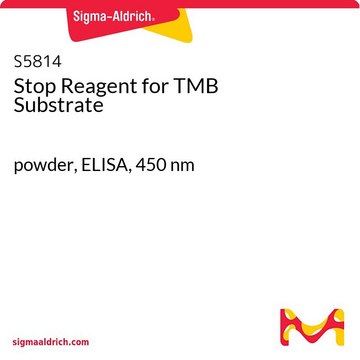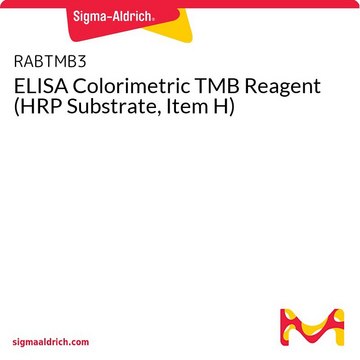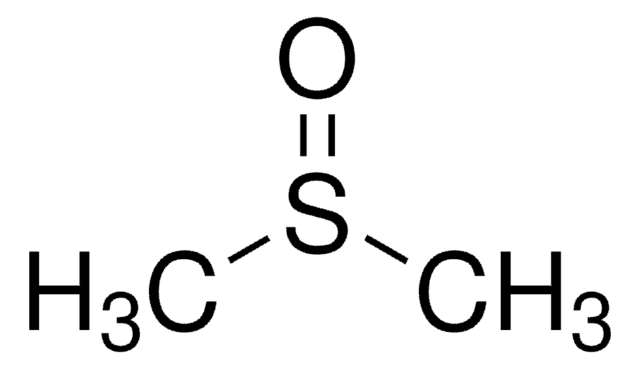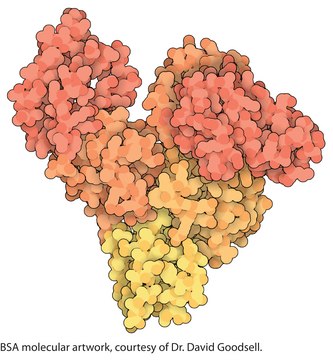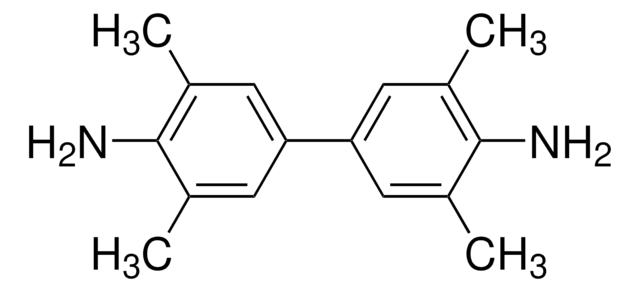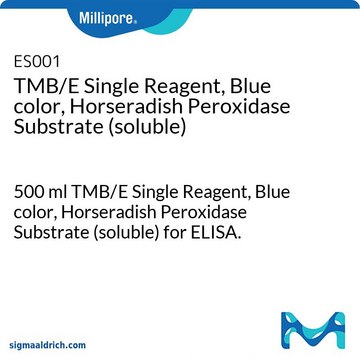S5689
Stop Reagent for TMB Substrate
solid, ELISA, 650 nm
Sign Into View Organizational & Contract Pricing
All Photos(1)
About This Item
UNSPSC Code:
12352204
NACRES:
NA.83
Recommended Products
Application
Stop Reagent for 3,3′,5,5′ tetramethylbenzidine (TMB) Substrate has been used as stopping reagent for TMB substrate in enzyme linked immunosorbent assay (ELISA) reaction.
Signal Word
Danger
Hazard Statements
Precautionary Statements
Hazard Classifications
Acute Tox. 3 Oral - Eye Irrit. 2 - Skin Irrit. 2
Supplementary Hazards
Storage Class Code
6.1C - Combustible acute toxic Cat.3 / toxic compounds or compounds which causing chronic effects
WGK
WGK 3
Flash Point(F)
Not applicable
Flash Point(C)
Not applicable
Regulatory Information
监管及禁止进口产品
Choose from one of the most recent versions:
Already Own This Product?
Find documentation for the products that you have recently purchased in the Document Library.
Dong-Mei Wu et al.
Journal of cellular physiology, 233(9), 6632-6643 (2017-12-02)
This study aims to investigate the effect of microRNA-129 (miR-129) on proliferation and apoptosis of hippocampal neurons in epilepsy rats by targeting c-Fos via the MAPK signaling pathway. Thirty rats were equally classified into a model group (successfully established as
In vitro and in vivo evaluation of cysteine rebridged trastuzumab-MMAE antibody drug conjugates with defined drug-to-antibody ratios
Bryant P, et al.
Molecular Pharmaceutics, 12(6), 1872-1879 (2015)
ELISA for Alpha-hemolysin (Hla) in Methicilin-resistant Staphylococcus aureus (MRSA)
Khodaverdian, Varandt Y and Shoham, Menachem
Antimicrobial Agents and Chemotherapy (2013)
Eugene Agapov et al.
American journal of respiratory cell and molecular biology, 41(4), 379-384 (2009-06-06)
Diagnosis and therapy of chronic inflammatory lung disease is limited by the need for individualized biomarkers that provide insight into pathogenesis. Herein we show that mouse models of chronic obstructive lung disease exhibit an increase in lung chitinase production but
Our team of scientists has experience in all areas of research including Life Science, Material Science, Chemical Synthesis, Chromatography, Analytical and many others.
Contact Technical Service